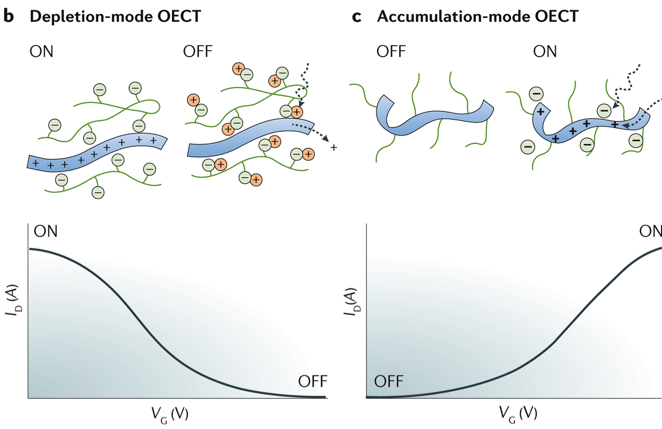The majority of the devices developed in the field of organic bioelectronics rely on efficient and balanced mixed ionic and electronic conduction in the organic material. For instance, the performance of an organic electrochemical transistor (OECT) depends on how easily the electronic charge carriers move along the film, how keen the material is to uptake (de)dopant ions, and eventually how efficiently these ions affect the output current. On the other hand, organic materials have the feature to gain specific properties with a modification in their chemical structure, a change in the film morphology or microstructure. Combining in-situ techniques to monitor ion and electron motion in films, fibers, and porous scaffolds of organic materials during their operation, we address untacked questions with the aim to find the best performing materials, formulations, processing conditions and form factors for applications in ionic media. These optimized materials are then applied to build specific devices (OECTs, electrodes, electrochemical actuators or drug delivery devices) that can sense or stimulate biological signals.


